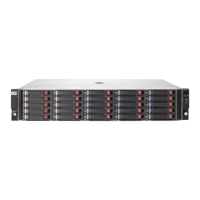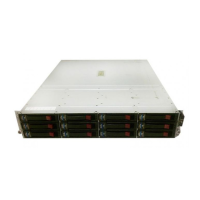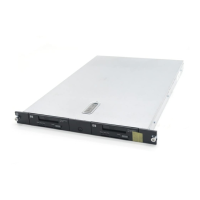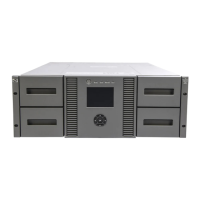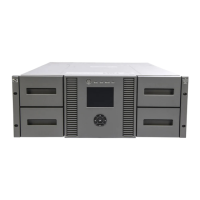Microsoft Windows SAN rules
This section describes the SAN rules for Microsoft Windows.
For current storage system support, see the SPOCK website at http://www.hp.com/storage/spock.
You must sign up for an HP Passport to enable access.
Table 106 describes the SAN configuration rules for Microsoft Windows. Table 107 describes support
for Microsoft Windows multipathing coexistence.
Table 106 Microsoft Windows SAN configuration rules
Windows SAN rulesStorage systems
1
• Supports multipathing high-availability configuration in multiple fabrics or in a single fabric with zoned
paths.
All supported
• Zoning is required when Windows is used in a heterogeneous SAN with other operating systems.
• Supports a maximum of 20 servers, 8 nodes per cluster.
• MSA1000 single controller only.
• MSA1500 single controller and dual controller with active/active failover.
MSA1000
MSA1500
• Zoning is required when Windows is used in a heterogeneous SAN with other operating systems.
• Supports a maximum of 64 hosts.
• Supports MSCS.
• Windows 2003 supported with HP MPIO FF DSM 2.6.0.5 or later.
• Windows 2008 Microsoft MPIO DSM supported.
• For HBA parameter settings, see Table 117 on page 237.
P2000 G3 FC
MSA2000fc G2
(MSA2300fc)
MSA2000fc
• Zoning is required when Windows is used in a heterogeneous SAN with other operating systems.
• Supports boot from SAN. For more information, see “XP and VA SAN boot support” on page 268.
XP128
XP1024
XP10000
XP12000
XP20000
XP24000
VA7100
VA7110
VA7400
VA7410
XP48
XP512
• Zoning is required when Windows is used in a heterogeneous SAN with other operating systems.
• In an environment with multiple Windows 2000 or Windows 2003 clusters that share a storage array,
configure each cluster and its storage in a separate zone. If the same storage array is used by multiple
clusters, the storage ports can be in an overlapping zone.
• Supports active/active or active/passive failover mode. A multipathing driver is required.
• Supports MSCS and Microsoft Failover Clustering.
• Supports boot from SAN. For more information, see “EVA SAN boot support” on page 256.
• For HP Continuous Access EVA configuration information, see “HP Continuous Access EVA SAN in-
tegration” on page 254.
EVA6100
EVA6400
EVA8000
EVA8100
EVA8400
EVA3000
EVA4000
EVA4100
EVA4400
EVA5000
EVA6000
1
Unlisted but supported storage systems have no additional SAN configuration restrictions. For the latest support information, contact an
HP storage representative.
SAN Design Reference Guide 223

